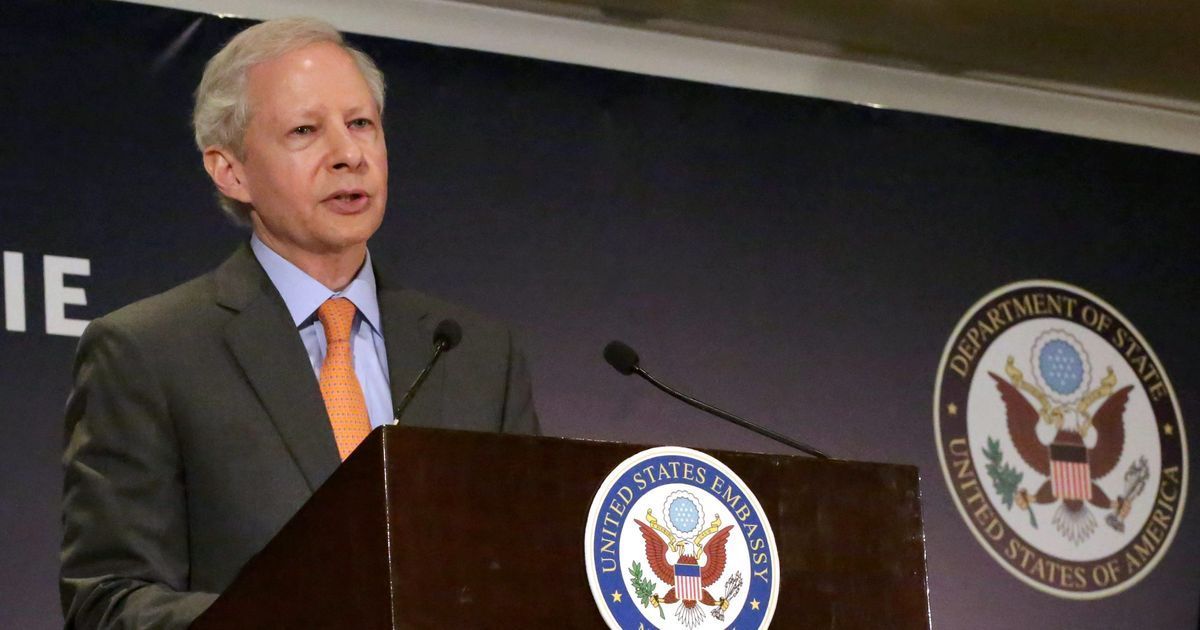India faces possibility of sustained Chinese aggression on border, says outgoing US envoy
Kenneth Juster also confirmed that US closely coordinated with India amid its standoff with China.

Outgoing United States Ambassador to India Kenneth Juster on Tuesday said that India faces the prospect of sustained Chinese aggression along the Line of Actual Control, The Hindu reported. He also confirmed that US closely coordinated with India amid its standoff with China, but left it to India to provide details of the cooperation.
Juster made the remark during an address in Delhi to mark the end of his term. “Our close coordination has been important as India confronts, perhaps on a sustained basis, aggressive Chinese activity on its border,” the ambassador said. He added that it was up to the Indian government to decide whether or not to release the details of their cooperation.
The ambassador refused to answer a question on whether the US had alerted India about China assembling troops along the LAC earlier this year. “I appreciate the question and the interest in the internal discussions on China, but it’s not really something I’m at liberty to get into here,” he was quoted as saying by The Hindu. “If the government of India wants to comment on that, that’s for the government of India. Suffice it to say that we have cooperated.”
Juster also claimed that no other country contributed more to India’s security than the US, according to NDTV. “I believe that no country has as strong and robust a defense and counterterrorism relationship with India as does the United States,” he added.
Also read:
What you need to know about the India-US 2+2 dialogue and their efforts to deal with China
The ambassador noted that the Indo-Pacific region needed “stability, leadership, and democratic model for development” amid the coronavirus crisis. “This is why a strong and democratic India is an important partner to promote peace and prosperity,” Juster added.
In October, US and India had signed a military pact called Basic Exchange and Cooperation Agreement for Geo-Spatial cooperation, or BECA. This was designed to give Delhi access to advanced American satellite and map data for better accuracy of its missiles and drones. The agreement was signed during United States Secretary of State Mike Pompeo and Defence Secretary Mark T Esper’s visit to Delhi for the 2+2 ministerial dialogue.
The India-China standoff
The tensions along the Line of Actual Control started with initial scuffles that led to a pitched battle – without firearms – in June that saw 20 Indian soldiers killed. Beijing, however, refused to release casualty numbers on its side. The two countries have held several rounds of talks to resolve the conflict but there has been no breakthrough.
India and China on December 18 agreed to continue working towards ensuring complete disengagement of soldiers along the Line of Actual Control in eastern Ladakh as the border standoff between the two neighbouring countries continues.
On December 11, India had blamed China for the ongoing border standoff between the two countries, claiming that it tried to effect a “unilateral change” in the eastern Ladakh region. This came two days after External Affairs Minister S Jaishankar said that the ties between the neighbours are passing through their most difficult phase, claiming that Beijing has offered “five differing explanations” for violating agreements on maintaining peace.









